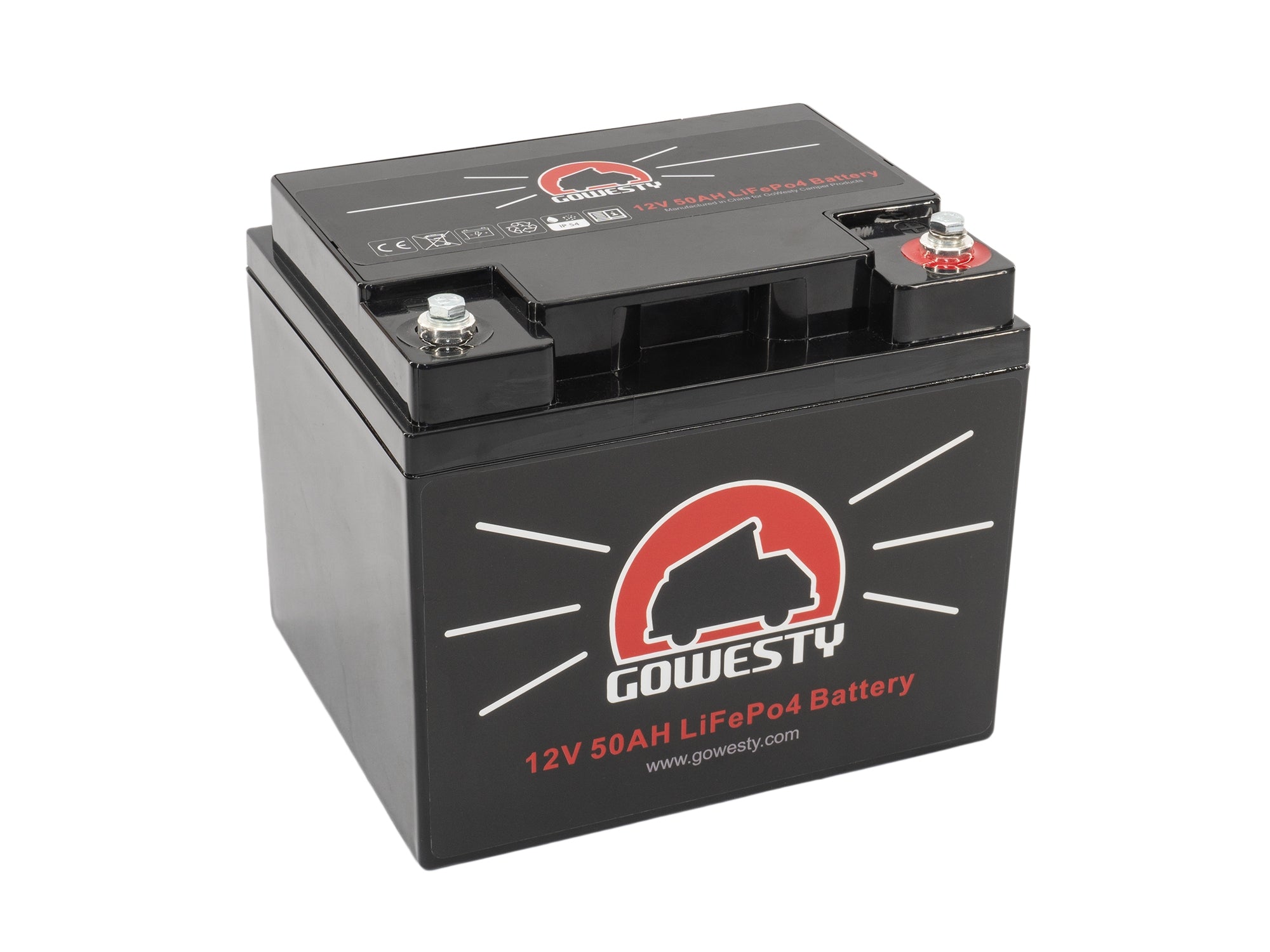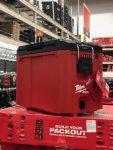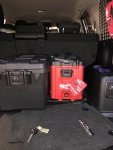I have been using a portable solar setup for vehicle use, and an adaptation of the same for my trailer. I am now looking to try incorporating lithium into my setup by creating a portable box with a lithium battery that I can use as needed.
My basic setup will be: 12V
1 or 2 100W panels depending on need.
A portable box with the following installed
-LiFePo battery (in the 50Ah or less range)
-Victron Blue Solar 75/15
-some form of shunt based battery monitor. Either another nice one like the BMV or something cheaper. ( I do not need bluetooth or phone app for this)
-Blue Sea fuse block for USB and Anderson PP loads
-Fuses/CB as needed
-Main battery on/off switch
I do not intend to run an inverter in this system. The biggest draw will be my fridge (Engel with an average 2.5amp draw and 50% duty cycyle in hot weather)
If I were running another lead acid battery I would feel pretty good. But I have never run lithium. If I get a brand name battery with a built in BMS, do i need to install any components to protect the battery? Is there anything else that I would need to do differently for a lithium setup?
Thanks.
I'm building a 50 Ah portable unit right now as well. My box will be slightly bigger (than needed) because I wanted to have the flexibility to grow my bank in the future. I was able to get a blemished (barely notice the ding) Milwaukee 10 inch tool box for 50% off at my local hardware store and will be installing a 50 Ah LIFEPO4 battery there for now. It's an ammo style 10"x9"x11" (internal) box that can be mounted on their mounting system (which can house two such boxes side by side). I picked up the mounting system as well and may pick up the second box and use it as a storage container. These things latch really tight and secure firmly to the mounting system. I lucked out with the discount but my plan B was basically a very cheap NOCO Group 24 battery box which I've had for a while (and hate).
Here's the other parts I have or on the way -
- 50 Ah Battle Born - Cheaper LiFEPO4 batteries exist and some have good reviews from those who've used them but with proper care these things will last a decade or more so I felt that it was worth spending a bit extra to go for the BB's and their 10 year warranty. I was able to get a 10% discount after speaking with them on the phone. Their sales rep couldn't offer me great advise on how best to mount it in a portable box, but she is having one of her technical reps call me tomorrow afternoon. I think that's great customer service and I called them before I ordered.
You can look to spend anywhere from the mid $300's, to $500 for a 50 Ah battery so there are other options. Cheaper options probably also exist but do look into the reputation of the company, their customer service and warranty. I liked the fact that BB assembles in the US, tests in the US, and gets their products certified here. Plus their customer service and tech support is here so given a 10 year warranty I liked those things in case I have to deal with any claims etc. I don't have the skills to build a LiFEPO4 from cells but I think if you are on a budget that is a better option since you can invest in a good quality BMS. I just feel that these things last forever and a few extra $$ for something that has a good reputation isn't the end of the world.
- Victron Smart Shunt 500A- Again, a reputable company and a good product. I didn't want a display as the unit would live in my rig for the most part. A display can be added later as well. The bluetooth connectivity is what I was looking for. This product is back ordered everywhere I looked so I don't expect it until well into September based on from where I ordered it. If you don't want bluetooth, then there are cheaper options available. ReLiON sells one and there is a generic version of that as well which costs significantly less.
- A 6 circuit fuse block - I've only used blue sea in the past, but am trying to see if I can get something in a slightly smaller form factor. Have to do some more research into that. Let me know if you know other good options
- Eaton 50 amp breaker (panel mounted) - This will be both a breaker and a switch to disconnect the entire setup. This is optional but I had it sitting around from another build where I didn't use it.
- 40 Amp terminal fuse
- Anderson and power connectors for various DC-DC charge connector, solar panel connections, and the 12 V fridge and a generic cig/usb mount panel with a switch
- Renogy 20 Amp DC-DC charger (not mounted on the unit itself but permanently mounted in my 4runner). My first choice would have been the Victron 30 Amp Orion charger but I have a blue sea circuit breaker all wired up in the back of the rig and a 20 Amp DC-DC fused at 30 Amps would just be plug and play there (30 amp being the limit per circuit). Also, Renogy has discount codes (10-15%) that you can google up and most work year round. I think I used Will Prowse's code.
- Victron 75/10 smart Bluetooth enabled MPPT - I'm only going to be going for a 100 Watt panel so I think this would be fine.
Any reputable LiFePO4 battery will come with a BMS but you still need to fuse it as per your load and wire sizes (I'm keeping things simple and doing 8 AwG (rated at 50-55 Amps) and copper wires with a 40 Amp terminal fuse). 10 Awg for the fridge wires, and 12 awg for the 12 volt cig/usb panel. If the battery you choose has a BMS then turn temperature compensation off on both the charge controller and any DC-DC or AC-DC charger. A good BMS is going to help you out a lot in terms of preventing over charging, over-discharging, low temperature management (check to see if the BMS has the ability to sense temperature and disconnect charging below freezing - most, though not all, drop in replacement LiFEPo4's do that) etc etc.
I'm not sure whether I would need to vent the box (for temp management) but I want to have that option if needed. 2" vents are like a couple of bucks at your hardware store and a couple should suffice. If you're running just a fridge, I don't think the battery will get very hot and a 15 Amp MPPT likewise should be ok. But do keep an eye out and drill some vents if you see the unit getting hot or if you intend on using it outdoors exposed to the sun. Also if you try to go super compact and look to mount things vertically then that may potentially cause more heat buildup (just a guess).
I'm still waiting on a few parts but I haven't yet come up with a great idea on how to secure the battery inside the box. I have a NOCO box which comes with the mounting strap and clips that can be mounted to secure the strap but I'm thinking a number of other ways (gluing a MDF board to the base of the box and screwing tie downs to it etc etc).
Would love to hear what you and others think is the best way to secure the battery inside the box given that it will be occupying roughly 50% of the area inside the box with the remaining room being used to mount the fuse block, shunt etc on MDF. The BB's are built well and UL listed but I still want them to be securely mounted with as minimal movement and vibration as one could hope given a DIY project.
All in, my goal is to be at or below 35 pounds for the whole set up which would be just about half the weight of a Group 27, 90 Ah AGM (just the battery).




